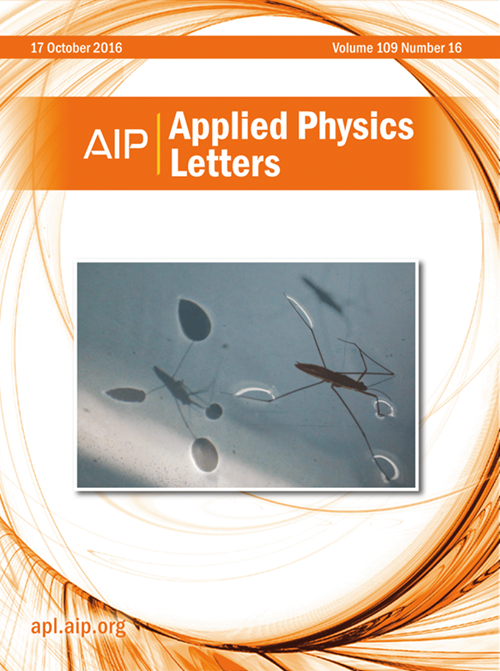Quantum dots solar cells under mimic high altitude platform satellites environments
IF 3.5
2区 物理与天体物理
Q2 PHYSICS, APPLIED
引用次数: 0
Abstract
Quantum dot solar cells are solution-processable, lightweight, and low-cost, and their long-term stability makes them attractive to explore for aerospace applications. In this work, we have studied lead sulfide (PbS) colloidal quantum dot solar cells (CQDSCs) using three different types of hole transport layer combinations, such as PbS-MPA/PbS-MPA (PbS-MPA), P3HT/PTAA (P3HT), and PBDB-T/MoO3(PBDB-T), under mimic working environmental conditions for high altitude platform satellites (HAPS). It includes ultraviolet rich solar irradiation (AM0), low temperature conditions (+10 to −20 °C), and low pressure. The thermal cycling (considering change in temperature at day–night) measurements were also conducted. The device performance under a broad range of temperatures from +80 to −100 °C was also included. The devices delivered power conversion efficiency (PCE) of 9.46 (8.41), 9.68 (7.86), and 11.77 (10.75)% for PbS-MPA, P3HT, and PBDB-T devices under AM1.5G(AM0), respectively. PbS-MPA devices maintain the PCE and slightly improve their performance under low temperatures (from 0 down to −100 °C). Meanwhile, the P3HT and PBDB-T-based CQDSCs devices started to decline in PCE significantly from −40 and +10 °C, respectively. Furthermore, PbS-MPA devices show excellent thermal cycling stability, making them attractive for further exploration for aerospace applications.模拟高空平台卫星环境下的量子点太阳能电池
量子点太阳能电池是溶液可加工的,重量轻,成本低,其长期稳定性使其具有探索航空航天应用的吸引力。在这项工作中,我们在模拟高空平台卫星(HAPS)的工作环境条件下,使用三种不同类型的空穴传输层组合,如PbS- mpa /PbS- mpa (PbS- mpa), P3HT/PTAA (P3HT)和PBDB-T/MoO3(PBDB-T),研究了硫化铅(PbS)胶体量子点太阳能电池(cqdsc)。它包括紫外线丰富的太阳照射(AM0),低温条件(+10至- 20°C)和低压。热循环(考虑昼夜温度变化)测量也进行了。器件在+80至- 100°C的广泛温度范围内的性能也包括在内。在AM1.5G(AM0)下,PbS-MPA、P3HT和PBDB-T器件的功率转换效率(PCE)分别为9.46(8.41)、9.68(7.86)和11.77(10.75)%。在低温(0 ~ - 100℃)条件下,PbS-MPA器件在保持PCE的同时,性能略有提高。同时,P3HT和pbdb -based cqdsc器件的PCE分别从−40°C和+10°C开始显著下降。此外,PbS-MPA器件表现出优异的热循环稳定性,使其具有进一步探索航空航天应用的吸引力。
本文章由计算机程序翻译,如有差异,请以英文原文为准。
求助全文
约1分钟内获得全文
求助全文
来源期刊

Applied Physics Letters
物理-物理:应用
CiteScore
6.40
自引率
10.00%
发文量
1821
审稿时长
1.6 months
期刊介绍:
Applied Physics Letters (APL) features concise, up-to-date reports on significant new findings in applied physics. Emphasizing rapid dissemination of key data and new physical insights, APL offers prompt publication of new experimental and theoretical papers reporting applications of physics phenomena to all branches of science, engineering, and modern technology.
In addition to regular articles, the journal also publishes invited Fast Track, Perspectives, and in-depth Editorials which report on cutting-edge areas in applied physics.
APL Perspectives are forward-looking invited letters which highlight recent developments or discoveries. Emphasis is placed on very recent developments, potentially disruptive technologies, open questions and possible solutions. They also include a mini-roadmap detailing where the community should direct efforts in order for the phenomena to be viable for application and the challenges associated with meeting that performance threshold. Perspectives are characterized by personal viewpoints and opinions of recognized experts in the field.
Fast Track articles are invited original research articles that report results that are particularly novel and important or provide a significant advancement in an emerging field. Because of the urgency and scientific importance of the work, the peer review process is accelerated. If, during the review process, it becomes apparent that the paper does not meet the Fast Track criterion, it is returned to a normal track.
 求助内容:
求助内容: 应助结果提醒方式:
应助结果提醒方式:


